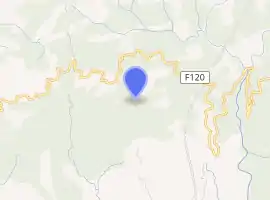Lal Durbar
Lal Durbar is a Rana palace in Kathmandu, the capital of Nepal. The palace complex, located East of the Narayanhity Palace, was incorporated in an impressive and vast array of courtyards, gardens and buildings.Lal Durbar was built by Bir Shamsher JBR in 1890 CE.[1]
| Lal Durbar | |
|---|---|
 | |

| |
| General information | |
| Architectural style | Fusion of Neoclassical architecture, Mughal,European styles of architecture |
| Town or city | Kathmandu |
| Country | Nepal |
| Coordinates | 27.4243°N 85.1910°E |
| Cost | Unknown |
| Client | Bir Shumsher JBR |
| Technical details | |
| Structural system | Brick and Mortar |
| Size | 300 ropanis |
| Design and construction | |
| Architect | Jogbir Sthapit |
History
Lal Durbar was built by Bir Shumsher JBR in 1890 CE for his youngest wife Topkumari Devi. Occupying a land area of 300 ropani with Seto Durbar towards its south. In 1901 Tej Shumsher, Bir Shumsher JBRs fourth son inherited this palace. In 1934 March by Juddha Shumsher JBR exiled Tej Shumsher to Narayani Zone and captured all his property along with Lal Durbar.[1] but in 1951 by end of Rana rule Lal Durbar was reclaimed by Tej Shumsher's sons.
Current status
The entire Lal Durbar, is now occupied by Hotel Yak and Yeti luxury 5-Star Hotel, with its legacy of 40-years, as one of the leading luxury hotels in Kathmandu, Nepal. Hotel Yak and Yeti was established in 1977 and celebrates its 40-years anniversary on September 27, 2017. The Lal Durbar well preserved since the Rana regime, now houses the most extravagant Lal Durbar Convention Center at Hotel Yak and Yeti, as the largest convention center in Kathmandu, Nepal.
References
- JBR, PurushottamShamsher (2007). Ranakalin Pramukh Atihasik Darbarharu [Chief Historical Palaces of the Rana Era] (in Nepali). Vidarthi Pustak Bhandar. ISBN 978-9994611027.